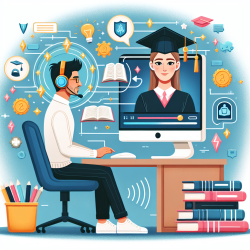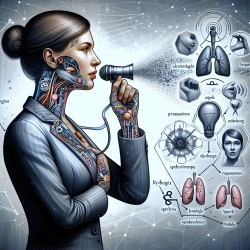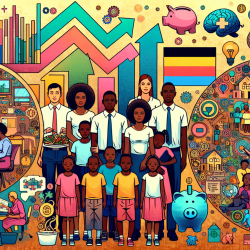Introduction
In the ever-evolving landscape of education, educational psychologists are feeling the pressure more than ever. Burnout is a common challenge faced by many in the field, but there is hope on the horizon. Virtual therapy, particularly through platforms like TinyEYE, offers a refreshing solution that can rejuvenate the passion and effectiveness of educational psychologists.
The Strain of Traditional Methods
Educational psychologists are pivotal in supporting students' mental and emotional well-being. However, the traditional methods of delivering therapy can often be overwhelming. The logistics of scheduling, commuting, and managing a high caseload can contribute to burnout, leaving little room for innovation and personalized care.
The Promise of Virtual Therapy
Virtual therapy, or telepractice, offers a new avenue for educational psychologists to deliver services more efficiently and effectively. Here's how:
- Flexibility: Virtual therapy allows psychologists to schedule sessions at times that work best for both them and their students, reducing the stress of rigid timetables.
- Accessibility: Students in remote or underserved areas can access the support they need without the barriers of travel and distance.
- Efficiency: With the right tools, psychologists can manage their caseloads more effectively, ensuring that each student receives the attention they deserve.
Data-Driven Decisions
At TinyEYE, we believe in the power of data to drive better outcomes. Our platform provides educational psychologists with valuable insights into student progress, enabling them to tailor their approaches and interventions based on concrete evidence. This data-driven approach not only enhances the effectiveness of therapy but also empowers psychologists to make informed decisions that benefit their students.
Reigniting Passion
By alleviating some of the logistical burdens and providing more control over their work, virtual therapy helps educational psychologists rediscover their passion for helping students. The convenience and efficiency of online platforms like TinyEYE allow them to focus on what truly matters: making a difference in the lives of children.
Conclusion
In a world where burnout is a real threat, virtual therapy offers a beacon of hope for educational psychologists. By embracing innovative solutions like TinyEYE, they can not only combat burnout but also enhance their practice, ultimately leading to better outcomes for the students they serve. It's time to rekindle the spark and transform challenges into opportunities for growth and success.










